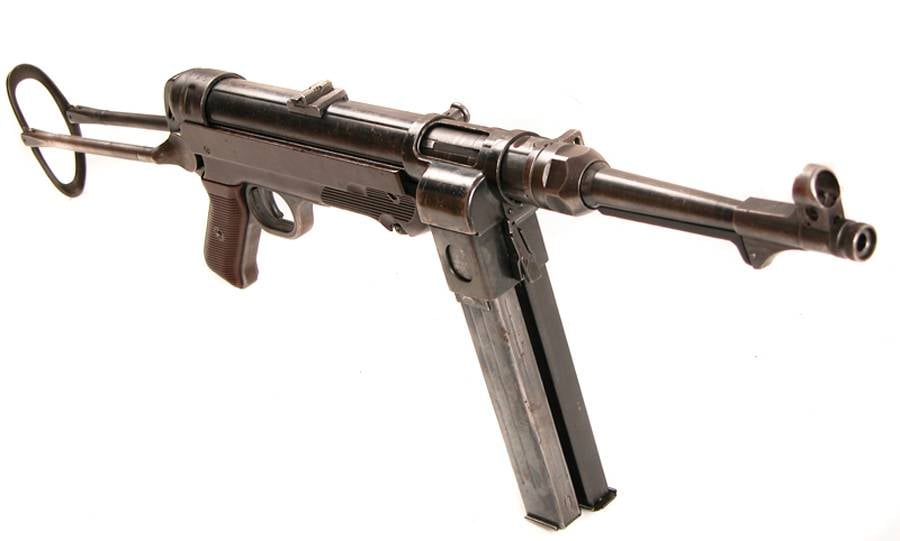1. Experimental PPSh with a Detachable Stock
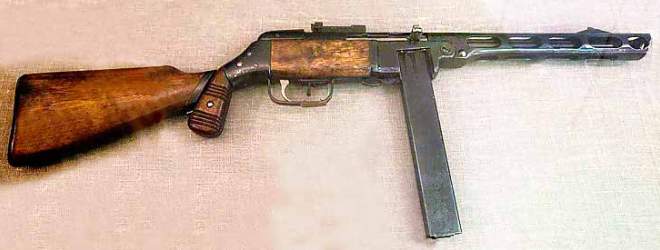
Along with designing the PPSh-41, Shpagin was also working on a version which could be more compact. To reach that goal, he came up with a detachable stock mechanism. Once the stock was removed the gun still had a pistol grip. This design was considered hard to manufacture and was ultimately canceled.
2. PPSh-45
In 1945 Shpagin came back to the idea of creating a more compact version of his SMG. At that point, he probably had more time to dedicate to the project and came up with a more refined design. He made a pretty interesting metal folding stock. As you can see in the images, when folded, this stock formed a pistol grip. When extended, the stock became more like a rifle style one with no distinct pistol grip. He also included some changes to the safety mechanism and receiver design to make it even easier and cheaper to manufacture.
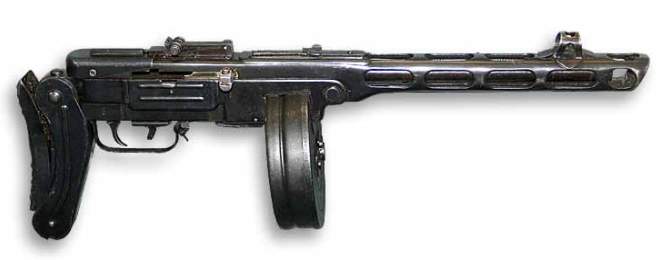
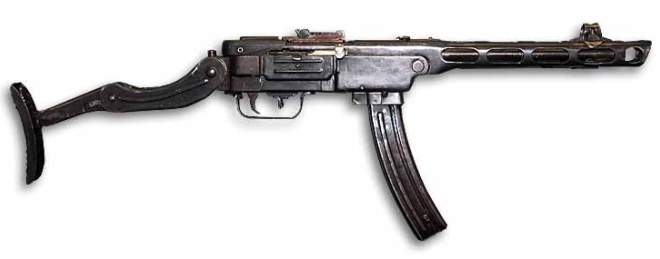
Shpagin designed two versions of this gun. First one (top image), had a possibility to use the existing PPSh-41 magazines (both box magazines and drums). The second version (bottom image) had a new magazine well design and was to be used with different box magazines. The overall length with the stock extended was 830mm (about 33″) and with the stock folded – 575mm (23″). The weight with a loaded 71 round drum magazine was 4,4 kg (9 lbs 11oz).
This version of PPSh was never mass produced or adopted. Possibly, the post-war tendency of development of intermediate cartridges and assault rifles rendered this SMG obsolete.
3. PPSh-2
In 1942 there was another trial held in the Soviet Union for a lighter and more compact SMG to be adopted and used along with the PPSh-41. A number of designers submitted their versions of the new gun among whom also was Shpagin. His new design was called PPSh-2.

This SMG was a simple blowback operated firearm with a fixed firing pin and firing from an open bolt. It was fed by 35-round box magazines which were different than that of PPSh-41. The gun had a different (improved) style magazine well. It also featured a reworked receiver which made the stamping much easier because one of the requirements of the trials was to have a design that would further simplify the manufacturing process. Besides the bolt and barrel, all other major components were made by stamping and attached to each other by riveting and spot welding.

The barrel jacket was shortened and there was a separate recoil compensator attached to the muzzle. The gun was full auto only, which allowed to simplify the trigger mechanism. The very first reports from the battlefield showed that PPSh is mainly used in full auto mode and with short bursts. That’s another reason why Shpagin decided to remove the single shot capability.
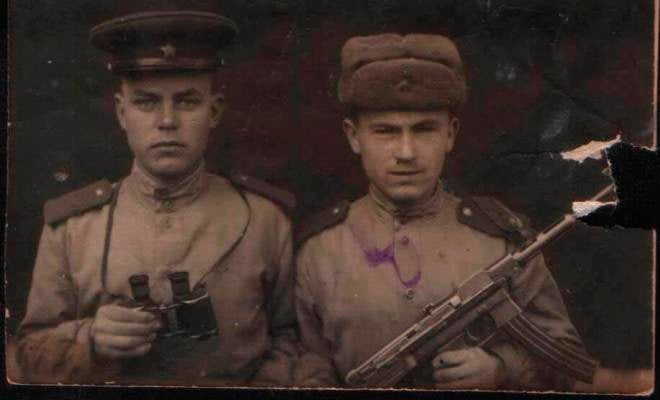
Another trial requirement was to reduce the rate of fire, which is 550 rpm on the PPSh-2. It also featured a piece of a composite material which worked as a buffer and probably as an additional measure to reduce the rate of fire.
The wood stock was detachable. There was also a version with telescoping metal stock. Another interesting design feature was the way safety worked on this firearm. It had a rather large dust cover, which when closed not only worked as a dust cover (closing the charging handle slot and the ejection port) but also as a safety. The dust cover locked the bolt either on its forward or rearmost (cocked) positions by catching the charging handle in the corresponding slot. That also should’ve been working great as a drop safety.
The trials commission pointed out the advantages of the PPSh-2 as being easy to make, robust and capable of shooting at a low rate of fire. Among disadvantages were the sensitivity to dust and excessive lubrication (especially in extremely cold conditions). Although the recoil compensator worked well, the commission noted that it generates an excessive amount of flash which makes it hard to shoot from tanks. The officials also didn’t like the detachable stock. It had an unreliable attachment mechanism and they thought that soldiers will lose the stocks on the battlefield.
Some high ranking officers were insisting to allow Shpagin to fix the problems and have a second stage of trials. However, it was a war time and arranging the second stage would be a luxury. The result of these trials was the adoption of Alexei Sudayev’s design which became known as the PPS-43.
4. Curved Barreled PPSh
By the end of the WW2 and right after it, Soviets experimented with curved barrel concept. They had some captured Nazi Germany samples of such firearms and tried to make their own versions. One of the host firearms for such a project was a PPSh SMG. This gun had a 30° curved barrel. The test firing showed that the accuracy was unsatisfactory even at close ranges (100 meters). Further development of the curved barreled PPSh was halted.
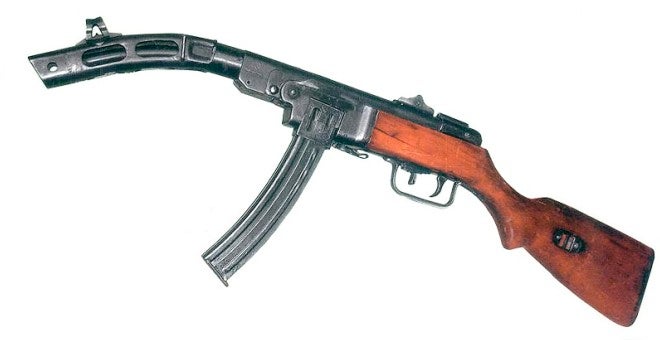
Curved barreled firearms were developed for many purposes – shooting from the trenches and corners without exposing yourself, shooting from inside the bunkers, protecting the close perimeter of tanks (which main weapons couldn’t reach) etc. Pretty much all of the curved barrel weapon projects in all the countries proved to be unrealistic and not that useful as they seemed to be on the paper.
5. PPSh with a Night Vision Scope
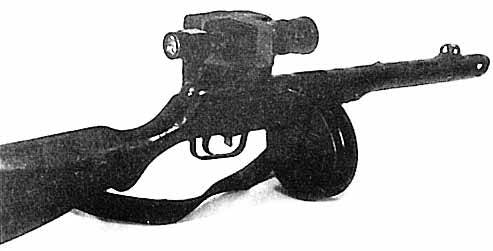
This one is actually a plain PPSh. What sets it apart, is that it is equipped with a night vision scope. Probably the image lacks the IR spotlight and the batteries – something descriptive for the first night vision designs of the late war era. Some sources say that the model designation of the scope was Ts-3 (Ц-3).








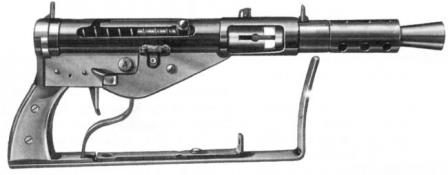





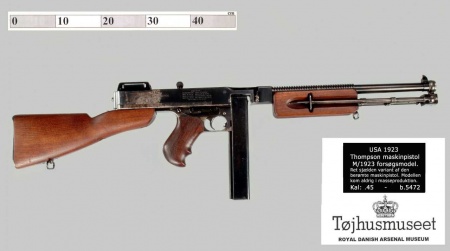








.jpg)
.jpg)

.jpg)

